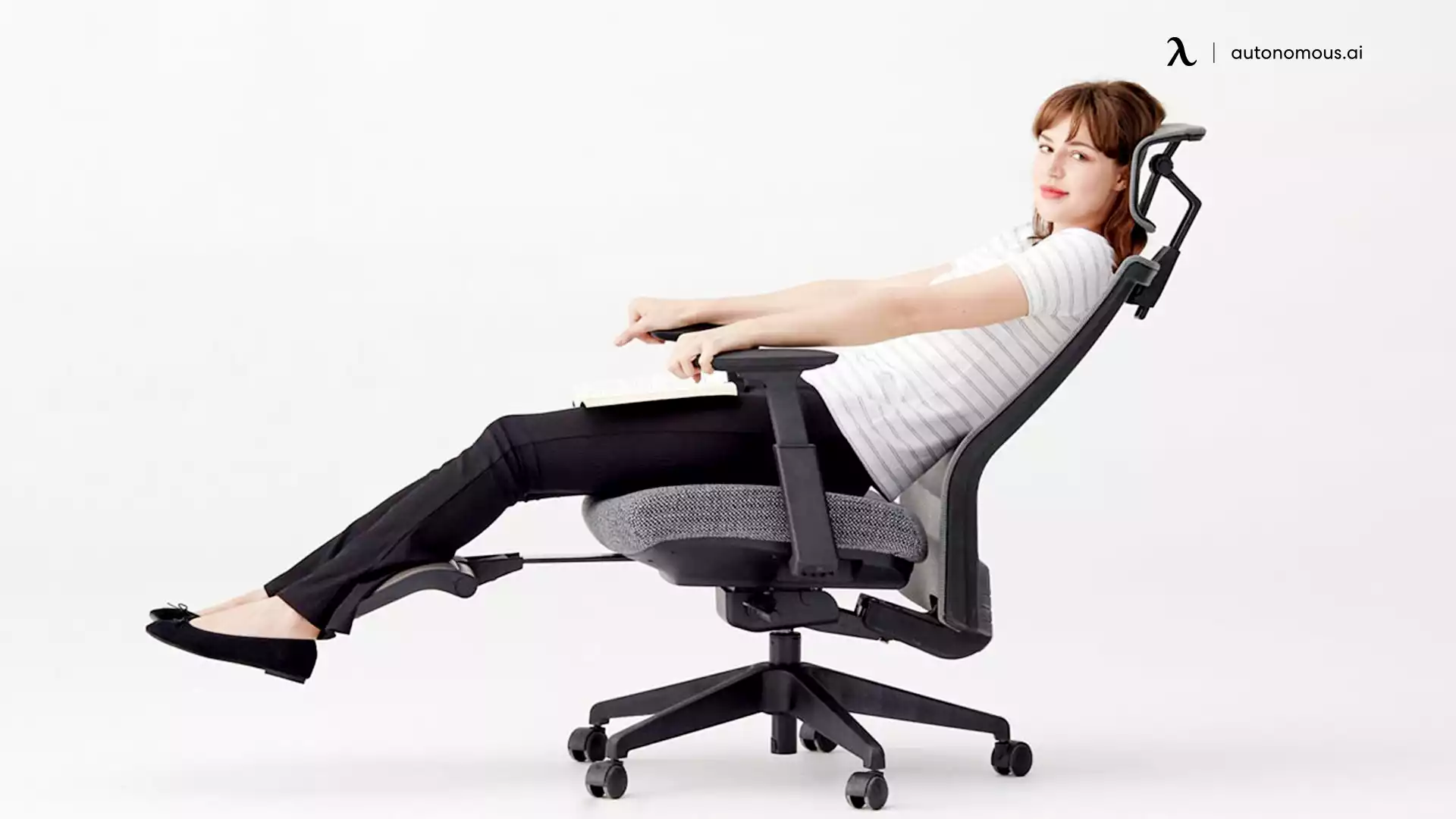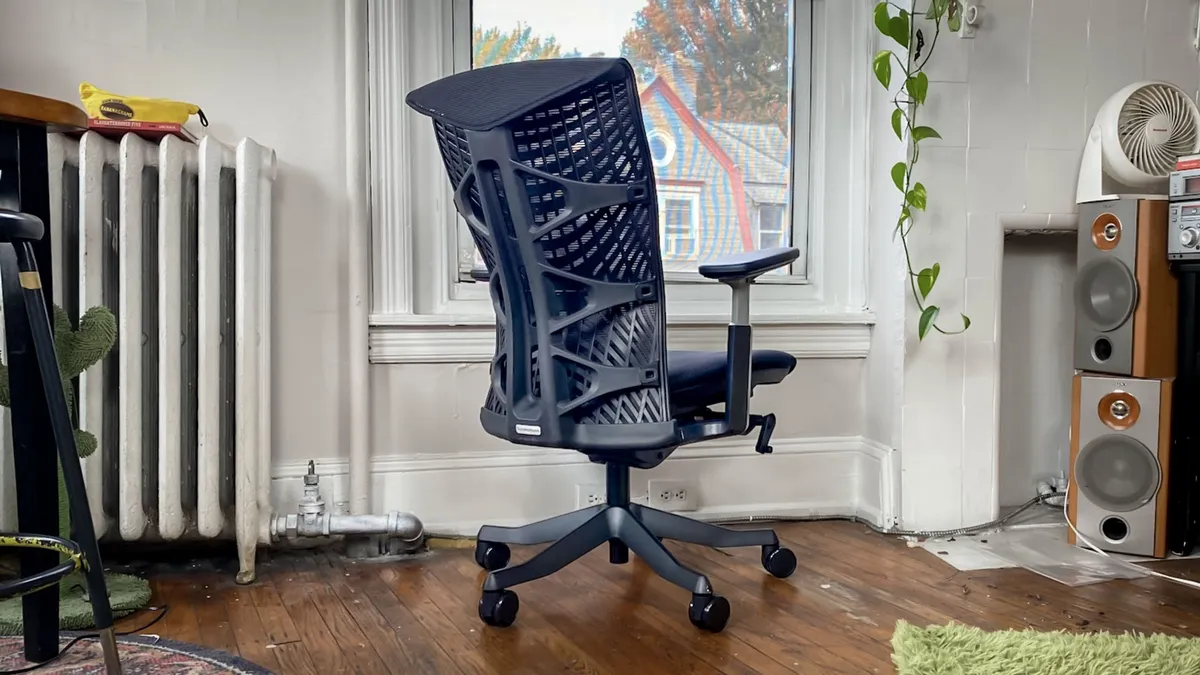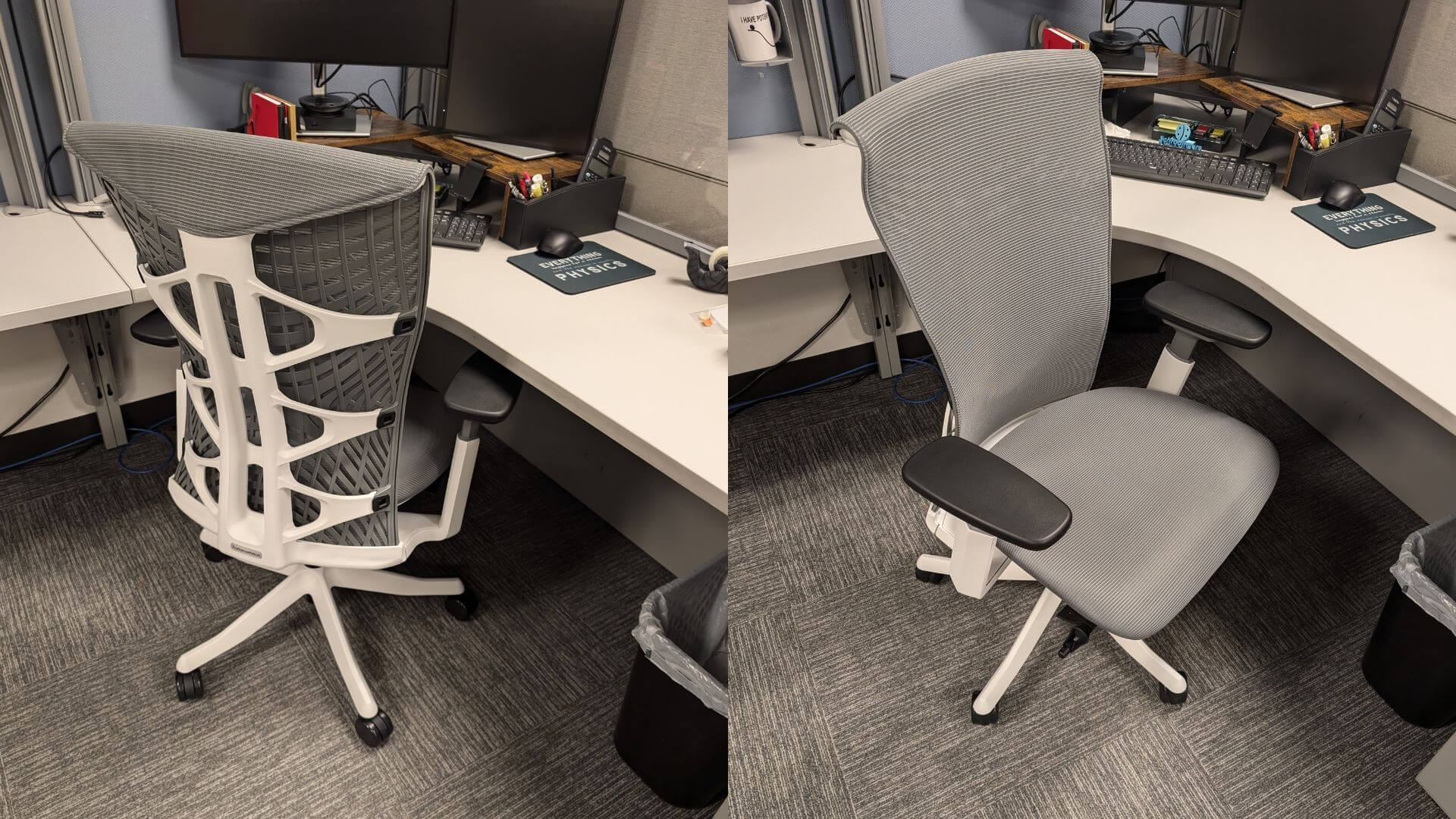
Table of Contents
- 1. Choose Breathable Fabrics
- 2. Use Absorbent Pads or Liners
- 3. Use a Fan or Air Circulation
- 4. Maintain Personal Hygiene
- 5. Stay Hydrated
- 6. Changing Positions
- 7. Brief Breaks or Air Brakes
- 8. Stand-up Labor
- 9. Using Mesh Chairs, Seat Cushions with Wooden Beads
- 10. Stop Using Leather Seats
- 11. Do Not Wear Leather Garments, Breathable Underwear is Recommended
- The Causes of Bum Sweat on Chairs
- FAQs
- Conclusion
Bum perspiration is a natural way for our bodies to control the temperature in hot and stressful situations. Sweat glands are to blame for this. The underarm, bottoms of feet, chests, pelvic area, and other areas of our skin have these glands. These glands create a fluid called sweat in response to hot temperatures, stress, or even certain medical problems. Sweat aids in the cooling of the body.
Eccrine ducts, apart from sweat glands, are found in the buttocks. Sitting down on an office chair or feeling worried, the eccrine sweat glands generate a liquid during lengthy periods. Sweating occurs as a result of this fluid. Sweat markings appear on the chair due to the formation of bum sweat.
On the other hand, having swampy buttocks leaves you at risk for various skin problems and infections. Your undergarments' damp and warm atmosphere is ideal for germs to thrive! You can develop yeast infections as well as rashes this way. Therefore, we are here to help you stop burning sweat on chairs. Read on below to know how to stop bum sweat on chairs.
In armchairs, there are a variety of strategies to keep your buttocks from sweating. The following are some helpful hints for keeping your buttocks from sweating.
1. Choose Breathable Fabrics
Opt for breathable clothing made of natural fibers like cotton or linen. These materials allow better air circulation, reducing sweat buildup.
When choosing breathable fabrics to reduce bum sweat, consider the following details:
- Cotton: Cotton is a natural fiber that is highly breathable and absorbs moisture well. It allows air to circulate around your body, helping to keep you cool and dry. Look for clothing items made primarily of cotton or those that have a high percentage of cotton in the fabric blend.
- Linen: Linen is another excellent choice for breathability. It is lightweight and has natural moisture-wicking properties. Linen garments allow air to flow freely, which can help prevent sweat buildup.
- Moisture-wicking fabrics: Some synthetic fabrics are designed to wick away moisture from the body, promoting evaporation and keeping you dry. Look for clothing labeled as "moisture-wicking" or "performance" fabrics. Common moisture-wicking materials include polyester, nylon, and spandex blends.
- Avoid tight or restrictive clothing: Tight-fitting clothing can trap heat and moisture against the skin, leading to increased sweating. Opt for looser-fitting garments that allow for better air circulation.
- Check garment construction: Pay attention to the construction of the clothing items. Look for garments with breathable features such as mesh panels, vents, or strategic perforations that allow air to flow and heat to escape.
- Layering: Consider layering your clothing to manage moisture. Wearing a lightweight, breathable base layer underneath can help absorb and distribute sweat away from your body, reducing the chance of sweat pooling on the chair.
- Test and experiment: Everyone's body reacts differently to various fabrics. Experiment with different fabrics and clothing styles to determine what works best for you in terms of comfort and reducing bum sweat.
Remember, while breathable fabrics can help reduce sweat, they may not eliminate it entirely. Incorporating other tips mentioned earlier, such as using absorbent pads or taking regular breaks, can further aid in managing bum sweat on chairs.
2. Use Absorbent Pads or Liners
Consider using absorbent pads or liners specifically designed to absorb sweat. These can be placed on the seat of the chair to prevent sweat from soaking through.
Disposable pads: Consider using disposable absorbent pads or liners specifically designed for sweat management. These pads are thin and discreet, and you can place them directly on the chair seat before sitting down. They are typically adhesive-backed to keep them securely in place.
Microfiber towels: Instead of using a full-sized towel, you can opt for smaller microfiber towels or hand towels. Fold them and place them on the chair seat to absorb sweat. Microfiber towels are highly absorbent and quick-drying, making them suitable for managing sweat.
Absorbent fabric squares: Cut or purchase small squares of absorbent fabric, such as terrycloth or microfiber, and place them on the chair seat. These fabric squares can soak up sweat and provide a dry surface to sit on.
Remember to change and wash or dispose of the absorbent pads or covers regularly to maintain hygiene and effectiveness. These shorter alternatives can help manage bum sweat while providing a more compact solution for your needs.

3. Use a Fan or Air Circulation
If the environment permits, use a fan or ensure good air circulation in the room to help evaporate sweat and keep you cool.
- Portable fans: Place a portable fan near the seating area to create a breeze. Adjust the fan's speed and direction to optimize air movement. Directing the airflow toward your body can aid in evaporating sweat and keeping you cool.
- Ceiling fans: If the room has a ceiling fan, turn it on to enhance air circulation. Adjust the fan speed to a comfortable level that promotes airflow without creating too much draft.
- Open windows or doors: If possible, open windows or doors to allow natural airflow into the room. Cross ventilation can help create a cooling effect and reduce humidity, minimizing sweat buildup.
- Use air conditioning or dehumidifiers: Air conditioning or dehumidifiers can help regulate the temperature and humidity levels in the room, reducing sweat production. Set the temperature to a comfortable level that discourages excessive sweating.
>>> Read more: Air Purifier vs. Dehumidifier: Which One Is Suitable for You?
4. Maintain Personal Hygiene
Maintaining personal hygiene is another crucial factor in preventing bum sweat on chairs. Regular cleansing of the buttocks area helps to remove sweat, bacteria, and oils that can contribute to unpleasant odors and discomfort. Showering daily, especially after physical activity or on hot days, helps to keep the skin clean and reduces the likelihood of excessive sweating.
Additionally, using gentle, pH-balanced cleansers and thoroughly drying the buttocks area after washing can help prevent moisture buildup. Wearing clean and breathable underwear made from moisture-wicking fabrics such as cotton or bamboo can also aid in keeping the area dry and comfortable.
Furthermore, practicing good bathroom hygiene, such as wiping thoroughly after using the toilet and changing out of sweaty or damp clothing promptly, can minimize the transfer of bacteria and sweat to chairs.
5. Stay Hydrated
Staying hydrated plays a crucial role in preventing bum sweat on chairs. When your body is adequately hydrated, it regulates its temperature more efficiently. Dehydration can lead to increased sweating as your body attempts to cool down.
By drinking plenty of water throughout the day, you maintain optimal hydration levels, reducing the need for your body to sweat excessively. This, in turn, helps to minimize bum sweat when sitting for prolonged periods, as your body can regulate its temperature more effectively. So, staying hydrated isn't just important for overall health—it's also a simple yet effective way to keep bum sweat at bay and maintain comfort while seated.
6. Changing Positions
Avoid sitting in one position for far too long and alternate positions as much as possible. By letting air move through, you can reduce the amount of sweat on your buttocks. Sitting for too long prevents air from moving over the groin area, causing the buttocks to heat up. The sebaceous glands create a liquid due to the warmth, which leads the buttocks to sweat.
7. Brief Breaks or Air Brakes
If you want to avoid butt sweat, taking numerous small breaks, also known as ventilation rest periods, is beneficial. These pauses allow the buttocks to cool down, resulting in less bum perspiration. During minor pauses, the person can rise and take a nearby stroll for a short period.
8. Stand-up Labor
Stand-up work is said to be beneficial in reducing bum sweat. Arrange your workspace with a standing workstation so that you may work in a ergonomic standing desk position if necessary. This should keep your buttocks cool while also burning more calories to keep you in shape.

9. Using Mesh Chairs, Seat Cushions with Wooden Beads
.webp)
ErgoChair Mesh
| Dimensions | 28.5”L x 28.5”W x 45.5” - 52”H |
|---|---|
| Seat dimensions | 19”L x 19”W |
| Seat depth range | 18” - 20” |
| Seat height | 18.5” - 21.5” |
| Back dimensions (w/o headrest) | 21”W x 22”H |
| Back dimensions (with headrest) | 21”W x 28” - 31”H |
| Tilt range | 22° |
| Armrest height | 11” - 14” |
| Armrest height (from the floor) | 26.7” - 32.2” |
| Caster wheel diameter | 2.36 inches |
| Number of caster wheels | 5 pieces |
| Materials | Special German mesh (72% polyester, 28% polyamide) |
| Colors | Cool Gray, Black |
| Weight capacity | 300 lbs |
| Item weight | 48.5 lbs |
The ErgoChair Ultra offers exceptional customization with nine adjustable points, supporting all primary sitting modes for all-day comfort. Its synchro-tilt mechanism reclines the back at a 2-to-1 ratio to the seat angle, ensuring level support for your lower back, legs, and thighs, which is especially beneficial for lumbar pain.
10. Stop Using Leather Seats
Whenever it pertains to airflow, leather chairs are a no-no. Because leather is non-porous and does not allow air to circulate, it generates sweat. The non-breathing leatherette facilitates the process of sweating buttocks even more.
11. Do Not Wear Leather Garments, Breathable Underwear is Recommended
Choosing the correct clothes is critical for reducing general body perspiration, particularly butt sweat. Clothing real leather or faux textiles is not breathable and does not allow air to travel through. The leatherette tends to prevent sweat from evaporating. You'll sweat more on your bum if you wear leather trousers.
Underpants made of porous or non-synthetic material can substantially aid in cooling the buttocks. Various types of breathable materials are available for undergarments. Cotton underwear is amongst the most popular and well-liked underwear fabrics. It's gentle on the skin and comfy to wear. The highly porous fabric aids to prevent butt sweat. Cotton's breathable nature assists air circulation, keeping the buttocks cool and comfortable.
Following the tips mentioned above will certainly help you avoid bum sweat.
The Causes of Bum Sweat on Chairs
Everyone sweats, but certain people sweat a lot more than anyone else. This may be unpleasant and even make you feel self-conscious about yourself. If you're at your office when this occurs, you will consume your thoughts with the irritation and continual fear about having left a wet mark on your jeans, and you will be less efficient. So it is important to find out the root cause. Sweating frequency and quantity may be affected by a person's:
- Sweat gland dispersion
- Genetics
- Body mass index
- Hormones
There are two types of sebaceous glands in the human body:
- Eccrine glands: These glands secrete an unscented fluid that aids in thermoregulation. These glands may be found in any part of the body, including the buttocks.
- Apocrine glands: These glands are found largely in the pelvic region, all around the navel, as well as in the armpits, chests, and a few other places, but they do not control the temperature of the body. Water, carbohydrates, and lipids are secreted in an odoriferous liquid.
Apocrine gland discharge, or sweat, can be tainted by germs on the top layer of skin, resulting in an odor. Eccrine discharge, including that seen on the butt cheeks, does not cause this. Eccrine secretion may arise for various causes, including when a human's core temperature increases. As an outcome, an individual's buttocks may sweat more when they're doing the following:
- Wearing clothes that are too tight or constrictive
- Exposed to extreme heat
- Exercising
FAQs
1. How to stop butt sweat?
To minimize butt sweat, consider wearing breathable, moisture-wicking underwear and clothing. Additionally, use moisture-absorbing powders or antiperspirants specifically designed for sensitive areas. Maintaining proper hydration levels and practicing good personal hygiene can also help reduce sweat.
2. How to prevent swamp ass?
Swamp ass, or excessive sweat and moisture in the buttocks area, can be prevented by wearing breathable fabrics, such as cotton or moisture-wicking materials. Taking regular breaks from sitting and using moisture-absorbing powders can also help keep the area dry and prevent discomfort.
3. Why is there a wet spot on my chair when I get up?
A wet spot on your chair when you get up is likely due to sweat or moisture buildup. This can occur from prolonged sitting, especially in hot or humid conditions. It's important to address the underlying causes, such as wearing breathable clothing and practicing good hygiene, to prevent further discomfort and potential odor.
4. What can I do to keep my chair dry and odor-free?
To keep your chair dry and odor-free, consider using moisture-proof chair covers or pads. Regularly cleaning and airing out your chair can also help prevent moisture buildup and reduce the risk of unpleasant odors. Additionally, using odor-neutralizing sprays or sachets can help keep your chair smelling fresh.
5. Are there any specific fabrics or materials that can help prevent butt sweat?
Fabrics such as cotton, bamboo, and moisture-wicking synthetics are ideal for preventing butt sweat. These materials allow for better air circulation and moisture absorption, keeping the skin dry and comfortable. Avoid wearing tight or non-breathable fabrics, as they can trap heat and moisture, leading to increased sweat.
Remember, individual experiences may vary, so it's essential to find the methods and products that work best for you in managing butt sweat and maintaining comfort while sitting.
Conclusion
In conclusion, combating bum sweat on chairs may seem like a minor inconvenience, but it can greatly impact comfort and confidence. By implementing the tips and strategies discussed in this blog, such as using moisture-wicking fabrics, employing breathable cushions, and maintaining proper hygiene, you can effectively minimize and even eliminate this discomfort. Remember, it's not just about staying dry—it's about reclaiming control over your comfort and ensuring that every seat you take is a pleasant one. So, say goodbye to sweaty seats and hello to a cooler, more comfortable sitting experience!
Bleiben Sie mit uns in Verbindung!
Abonnieren Sie unsere wöchentlichen Updates, um über unsere neuesten Innovationen und Community-Neuigkeiten auf dem Laufenden zu bleiben!
Interesse an einer Linkplatzierung?
.svg)


.jpg)
.jpg)
.jpg)






/https://storage.googleapis.com/s3-autonomous-upgrade-3/production/ecm/230914/bulk-order-sep-2023-720x1200-CTA-min.jpg)

/https://storage.googleapis.com/s3-autonomous-upgrade-3/production/ecm/230905/Untitleddesign.png)